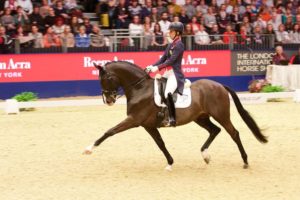20 Jun 1. How to be the best rider you can be: back to basics
 Most riders recognise that there is room for improvement and want to do better. Taking instruction on horseback and understanding horse psychology along with the theory behind applying different aids can help enormously, but correct practice is of paramount importance, especially as we all have at least some bad habits that it will take time to eradicate.
Most riders recognise that there is room for improvement and want to do better. Taking instruction on horseback and understanding horse psychology along with the theory behind applying different aids can help enormously, but correct practice is of paramount importance, especially as we all have at least some bad habits that it will take time to eradicate.
Going back to the basics may seem a retrograde step but in doing so, a rider can often discover very helpful new insights that may seem simple but that can make a huge difference to the horse’s performance.
In these articles, we will take a look at various aspects of riding where improvements are often needed and can be achieved with determination – crucially, developing an independent seat. Among other topics, we will discuss what is needed to achieve the correct upper and lower body positons, better balance in the saddle, more accurate leg aids, light hands along with the right rein aids, the appropriate distribution of weight and the use of the whip (only, of course, as a reinforcement).
It should be noted, however, that as you change the way you sit or use your leg and rein aids, your performance may actually initially seem to deteriorate as you re-educate your body and your horse reacts to the difference in your riding. While this may be frustrating, so long as you persevere, your horse will soon become accustomed to your new and much improved style of riding, while an independent seat will enable you to make much greater progress than would have been possible if you had carried on as before.
 So let’s think about the basics and what makes a rider like, for example, Charlotte Dujardin so good. Of course, she has natural talent, but she works hard to ensure she sits in the perfect position, has a strong yet supple body and gives accurate aids. She can move all the parts of her body independently, something that requires strong core muscles and can only be developed with practice. A horse will often try to compensate for the rider’s problems, which will be reflected in its way of going and prevent you from progressing to the next level or achieving your full potential.
So let’s think about the basics and what makes a rider like, for example, Charlotte Dujardin so good. Of course, she has natural talent, but she works hard to ensure she sits in the perfect position, has a strong yet supple body and gives accurate aids. She can move all the parts of her body independently, something that requires strong core muscles and can only be developed with practice. A horse will often try to compensate for the rider’s problems, which will be reflected in its way of going and prevent you from progressing to the next level or achieving your full potential.
Not everyone will naturally sit in the perfect position and even if you think you are well balanced and sitting straight, this may not be the case. When you have established whether you are sitting straight or crookedly or whether you favour one side over the other, your instructor can advise you on how best to correct your position and regular practice will help you to address individual issues. Once you have perfected your seat in halt (upper and lower body, legs and hands), you can practise maintaining it in walk, sitting trot and canter. Any improvements in your ability to move in perfect rhythm with your horse will be much appreciated – no more bouncing around on its back and/or jabbing it in the mouth.
Lessons on the EQUICISE enable riders who wish to improve their technique to concentrate solely on what individual parts of their body are doing, for example keeping their hands in place, feeling where their seat and lower back bones are in relation to the saddle or monitoring the angling and softening of their feet and ankles. Only by breaking down the various movements, feeling how the “right” thing works, and practising them individually and at different paces can you start to build on these changes to improve your overall seat. The EQUICISE is an excellent training and educational aid that allows you to do this without any external distractions, enabling fast results as it facilitates the focus on one detail at a time. Equally important, your horse will appreciate the results once you are back in the saddle! Book a LESSON on the EQUICISE and get rid of those bad habits!
Practise this on the equicise simulator

USE 'INSTRUCTION RIDE' SETTING. FIND THE ‘BALANCED POSITION’ SLIDE ON THE MONITOR WHICH YOU CAN USE AS A REMINDER OF THE CORRECT POSITION YOU ARE AIMING TO ACHIEVE. POSITION THE MIRRORS TO ENABLE YOU TO SEE SIDE VIEWS AND FRONT AND BACK. ALIGN YOUR BODY SO YOU HAVE A STRAIGHT LINE SHOULDER-HIP-HEEL AND ELBOW-HAND-BIT. PRACTISE MOVING UP AND DOWN THROUGH THE PACES MAINTAINING YOUR POSITION THROUGH THE TRANSITIONS.
Practise this on the equicise simulator

USE 'INSTRUCTION RIDE' SETTING. FIND THE ‘BALANCED POSITION’ SLIDE ON THE MONITOR WHICH YOU CAN USE AS A REMINDER OF THE CORRECT POSITION YOU ARE AIMING TO ACHIEVE. POSITION THE MIRRORS TO ENABLE YOU TO SEE SIDE VIEWS AND FRONT AND BACK. ALIGN YOUR BODY SO YOU HAVE A STRAIGHT LINE SHOULDER-HIP-HEEL AND ELBOW-HAND-BIT. PRACTISE MOVING UP AND DOWN THROUGH THE PACES MAINTAINING YOUR POSITION THROUGH THE TRANSITIONS.




